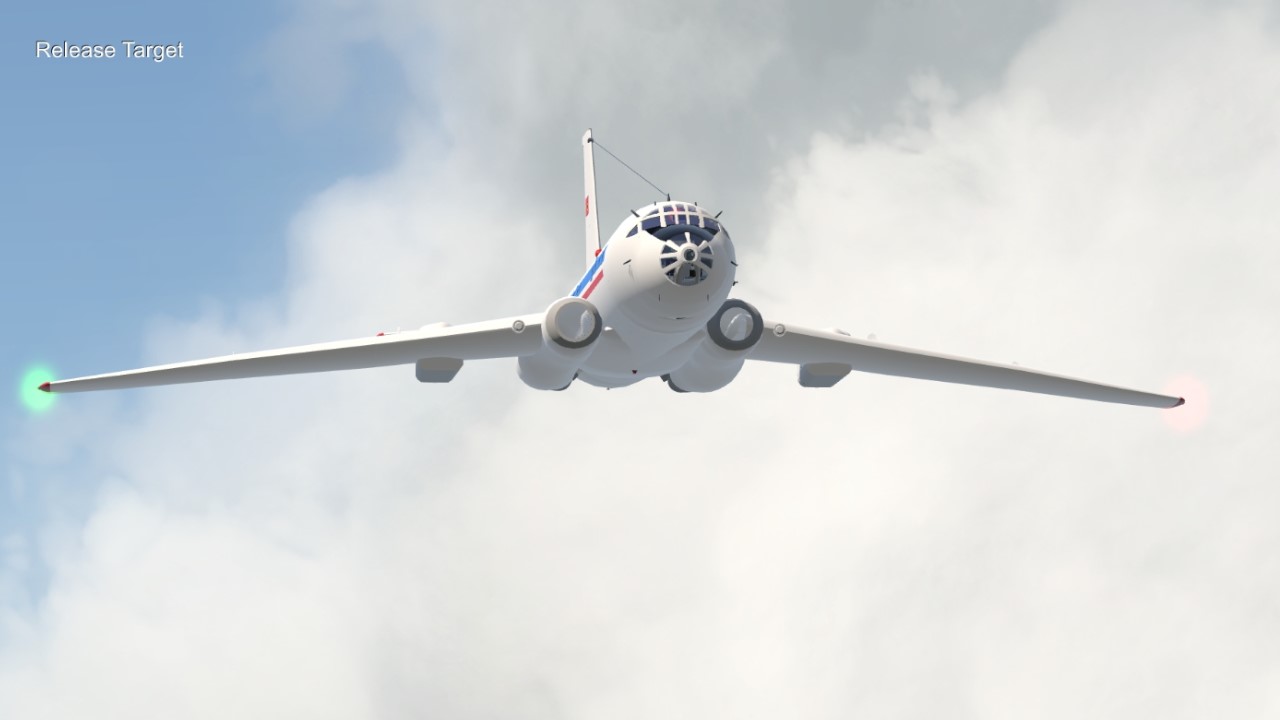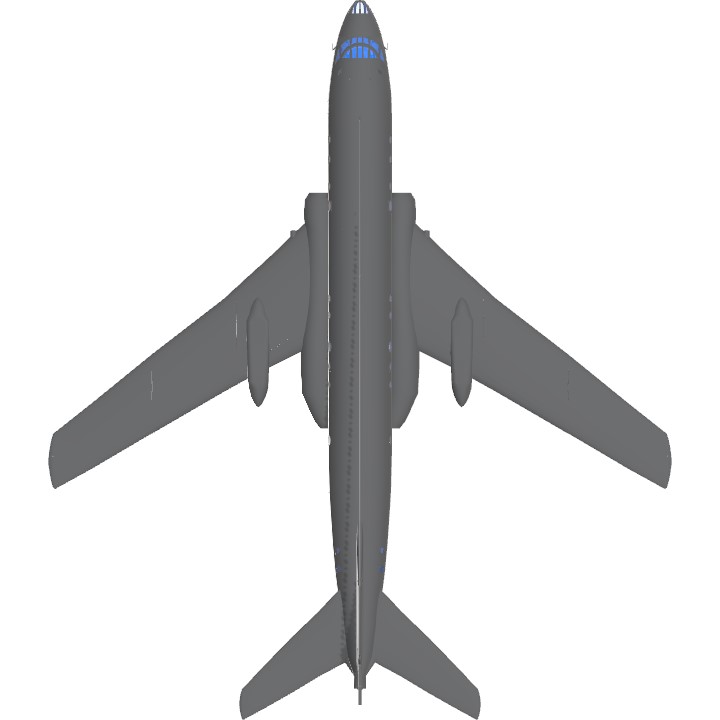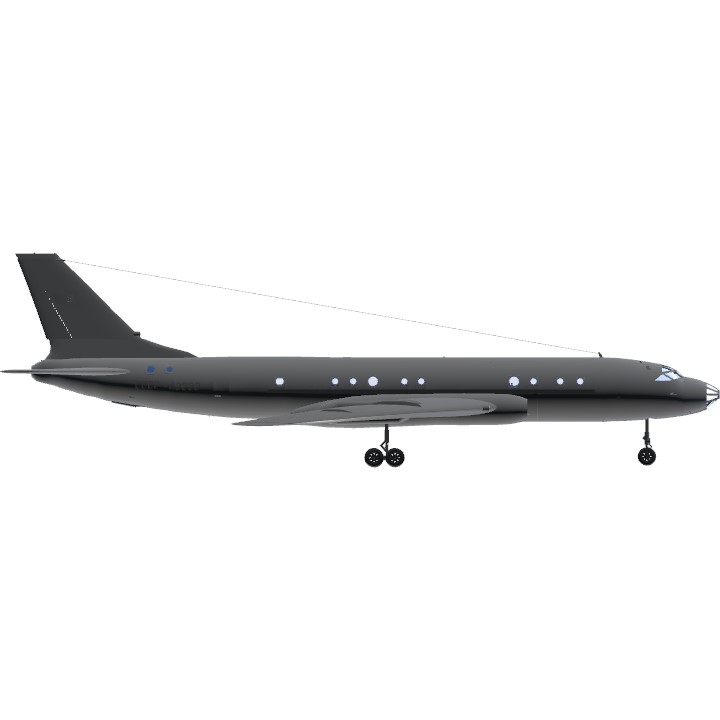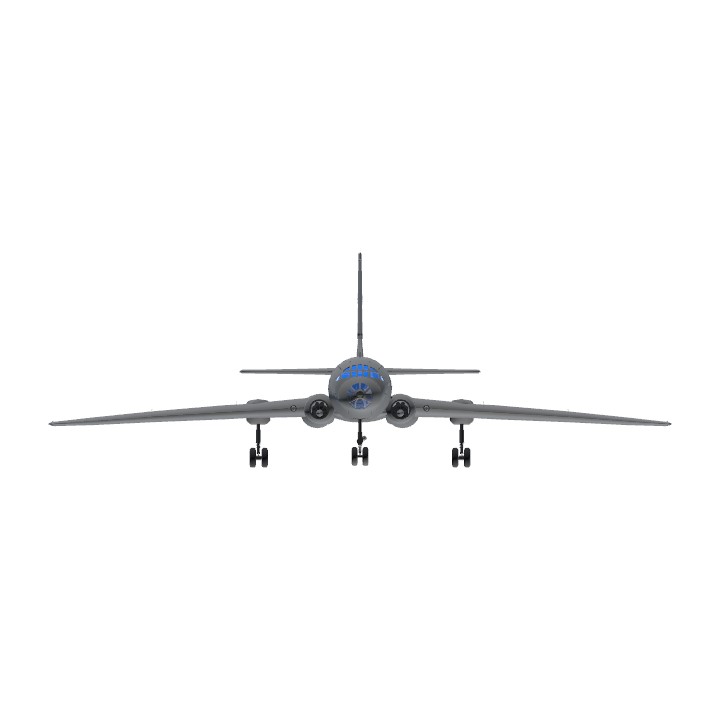The Tu-104 (Russian: Tupolev Tu-104, NATO codename: Camel) was a twin-engined medium-range jet airliner designed by the Tupolev Design Bureau of the Soviet Union.
The aircraft is based on the Tu-16 bomber (the Chinese version is H-6). At the end of 1954, the Kharkiv Aircraft Factory in the Soviet Ukraine began to build the fuselage of the first production version of the Tu-104. The first flight was successful on 17 July 1955. In September 1956, the first commercial operation was conducted on the Moscow-Irkutsk route. Production ended in 1960, with more than 200 built.
The Tu-104 was the first Soviet jet airliner and the second in the world to enter commercial service after the British Comet.
Tupolev Tu-104 is a twin-engine jet airliner developed by the Tupolev Design Bureau of the former Soviet Union (named after Andrei Tupolev, the father of Russian aviation), which was the first jet airliner of the former Soviet Union. The last digit is all "4" (Tu-114, Tu-144, Tu-154). The Tu-104 was the second commercial airliner to enter service after the British Comet. The Tu-104 was given the NATO designation Camel and Camel.
The Tu-104 was developed on the basis of the military Tu-16 bomber (Tu-16, NATO codename Badger). The Tu-104 was fitted with two Mikulin AM-3 turbojet engines, which were also designed to be embedded in the wing root.
The Tu-104 made its first flight on June 17, 1955, and began mass production in Khabarovsk Factory No. 135 in 1955, before being equipped for civil aviation in the former Soviet Union the following year. In 1956, in preparation for Khrushchev and Bulganin's visit to Britain, the Tu-104 passenger plane flew to London for the first time, causing a sensation. The early Tu-104 had a crude interior and could carry 48 passengers on short - to medium-range flights. The 70-seat Tu-104A and 100-seat Tu-104B were later developed. By the end of 1960, over 200 Tu-104s had been built.
The Soviet Tu-104 (including the essentially identical bomber Tu-16, known in China as H-6) also had a wing-root engine layout. But this arrangement has its serious limitations. The engine is close to the fuselage, the noise is very loud, and the hot jet stream has washed the fuselage more seriously. Another problem was that the wings were structurally awkward as they connected through the engine compartment to the fuselage. The bigger problem is that engine compartments are designed specifically for a particular engine and are difficult to retrofit other engines, so engine technology advances and it is difficult to easily apply the latest advances unless the engine compartment is redesigned. This is a big deal. After the first generation of jet airliners, this layout essentially died out. [2]
The Tu-104 made its first flight on June 17, 1955, a month before the Boeing 707, which was also a jetliner. The Tu-104 took the lead in bringing the world's civil aviation industry into the "jet" era.
1,2 keys: Start the left and right engines respectively (leave for 10 seconds after activating the keys)
Key 3: Activate nose gear steering (Yaw control)
Key 4: Wing light
Key 6: Cabin light
Key 7: Decelerating parachute
Key 8: Aircraft position light
VTOL: Flap
Trim: horizontal stabilizer
Specifications
Spotlights
- Default4 7 months ago
- tsampoy 7 months ago
- RicardoACE 7 months ago
- VinFage 6 months ago
- DISHWASHER2005 7 months ago
- GuianLorenzo 7 months ago
- MentallyDistorted 7 months ago
- CaptainBrayden 7 months ago
- Dragoranos 7 months ago
- CCCP0000001 7 months ago
- Rjenteissussy 7 months ago
- TheFlightGuySP 7 months ago
- Boeing727200F 7 months ago
- TheMouse 7 months ago
- B1BLancer 7 months ago
- Apollo018362 7 months ago
- F14DSuperTomcat77 7 months ago
General Characteristics
- Created On Windows
- Wingspan 142.6ft (43.5m)
- Length 164.6ft (50.2m)
- Height 49.2ft (15.0m)
- Empty Weight N/A
- Loaded Weight 182,235lbs (82,660kg)
Performance
- Power/Weight Ratio 0.961
- Wing Loading 9.9lbs/ft2 (48.5kg/m2)
- Wing Area 18,342.6ft2 (1,704.1m2)
- Drag Points 16382
Parts
- Number of Parts 1699
- Control Surfaces 9
- Performance Cost 6,371






Due to the previous work because the cover is not quite consistent with the work, now it has been re-released, please forgive the inconvenience caused to everyone...
@AndreSegrus спасибо товарищ
@Rmilitarycompany of course
@AndreSegrus comrade can i requests build HQ-17/Tor-m1 with tracked chassis
Comet from Wish doesn't exist. it can not fly.
The Comet from Wish in particular:should’ve gone via train
Why does this say I got spotlighted but I didn’t
@Rb2h It means "New computer, wow ( •̀ ω •́ )✧"
@AndreSegrus Hello, I don't speak Chinese sorry 😅
I'm using Google Translate though
@Rb2h 新电脑,诶嘿O(≧▽≦)O
New phone
Let's gooooo
Omg I can build again
@Rb2h hhh(‾◡◝)
"Tu-104 is the best in the world... In 5 minutes it will bring your grave"
Airliner Badger
@someonewithapetnamedpablo <( ̄︶ ̄)↗两张或三张图片拼起来,然后再导入游戏当中
How do you put the second photo? I can only put one 😭
@tom123chrchr ヾ(≧▽≦*)o
@MomoDesigns hhhhh(≧∇≦)
Bro just installed simpleplanes 😭
I love tupolev planes
good work 👍
好耶!